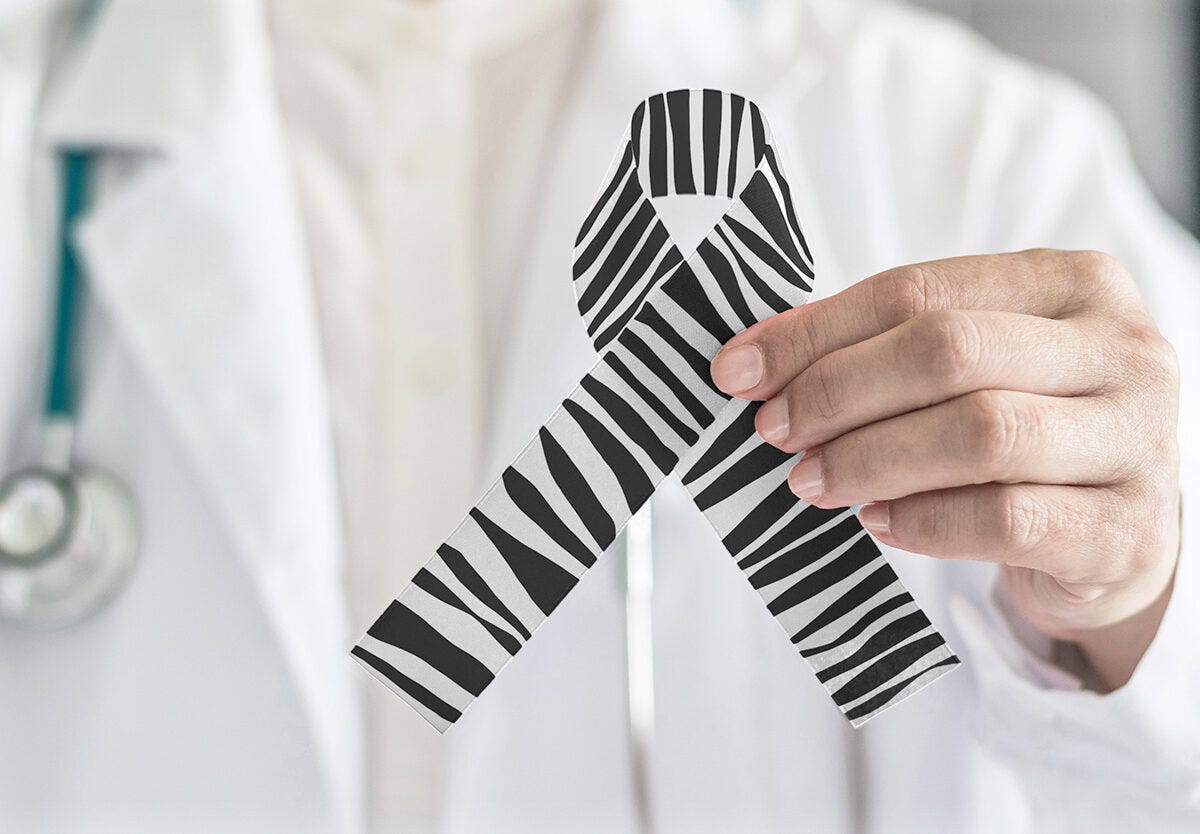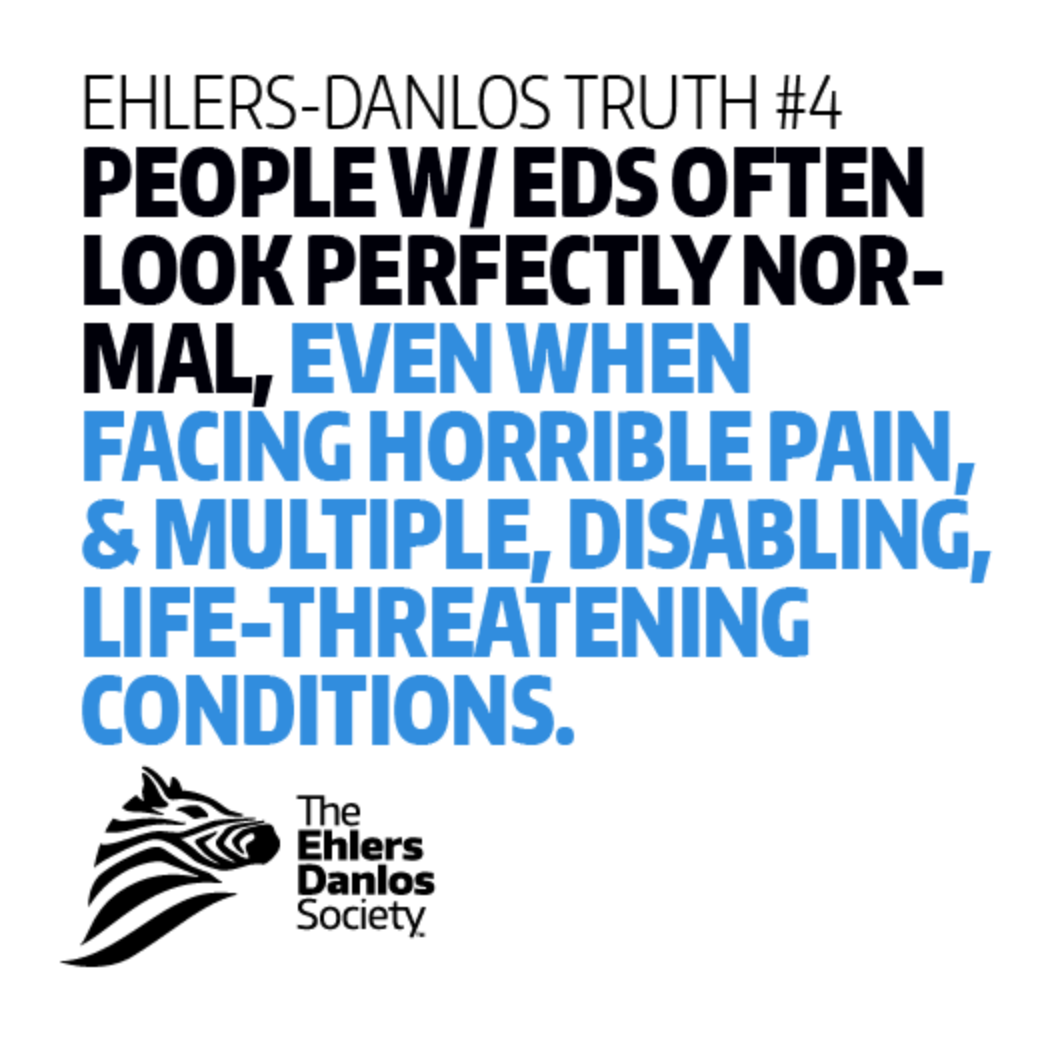Bending the Rules: EDS & HSD Awareness Month Special
Tackling some of the most persistent myths
In this week's Bendy Bulletin, we're dedicating the full issue to EDS and HSD Awareness Month - a time that’s not just symbolic, but crucial. Raising awareness isn’t just about visibility; it’s about changing lives. Early diagnosis, better treatment options, more informed healthcare providers, and stronger support systems all start with awareness. This month-long spotlight gives our community a collective voice, reminds the world we exist, and fuels the momentum for better research, resources, and recognition. It’s a cause worthy of a full newsletter - and of every ounce of energy we can give.
Together We Thrive Summit | June 28–30, 2025 | Washington, D.C.
Targeting Complexity: Integrative Clinical Pathways for Connective Tissue Disorders with Dr. Linda Bluestein
Join us for half-day wellness seminars, fun family activities, and meetings with your Congressional representatives to advocate for patients living with chronic illness. Empower yourself and speak on behalf of patients and caregivers around the country! In addition to the other excellent speakers listed, I’ll be diving into the complex world of chronic illness and sharing integrative clinical pathways that actually make a difference.
🎟 Tickets on sale now - hope to see you there!
Breaking the Myths - Raising Awareness for Ehlers-Danlos Syndromes & Hypermobility Spectrum Disorders
May is Ehlers-Danlos Syndromes (EDS) and Hypermobility Spectrum Disorders (HSD) Awareness Month, a time to challenge misconceptions, amplify patient voices, and advocate for better recognition and care. EDS and HSD affect connective tissues - the body’s scaffolding system that supports skin, joints, blood vessels, and organs. Yet, public awareness remains low, and misinformation continues to delay diagnosis, treatments, and understanding.
To help change that, we’re tackling some of the most persistent myths surrounding these conditions.
Myth #1: “EDS is purely a joint issue.”
Reality: EDS affects far more than just joints.
Yes, joint hypermobility can be the most visible or noticeable feature - especially in types like hypermobile EDS (hEDS). But EDS is a multisystemic condition, meaning it can affect essentially every part of the body. Skin may be soft, stretchy, or fragile. Easy bruising is common. Many individuals experience chronic pain, fatigue, poor sleep, digestive issues (such as heartburn, delayed gastric emptying, constipation, diarrhea, food intolerances, and bloating), and dysautonomia (including conditions like POTS). Less common subtypes, like vascular EDS (vEDS), involve life-threatening complications such as arterial or organ rupture.
Understanding EDS as a whole-body disorder is essential for appropriate care and support.
Myth #2: “EDS only affects women.”
Reality: EDS and HSD affect people of all genders.
There’s a perception that EDS is a “women’s condition,” likely because women are more frequently diagnosed. But this may be due in part to diagnostic bias and gendered healthcare disparities. Symptoms in men may be overlooked or dismissed, or they may be less likely to seek care due to stigma around chronic illness. Hormones may affect this as well since higher levels of testosterone can be beneficial.
In truth, EDS and HSD are heritable genetic conditions - they don’t discriminate by gender. Increased awareness is essential to ensure equitable diagnosis and treatment for everyone, regardless of gender identity.
Myth #3: “EDS is always easy to diagnose.”
Reality: EDS is often missed, misunderstood, or misdiagnosed.
People with EDS or HSD frequently spend years or even decades seeking answers for a confusing array of symptoms. Because there is no single diagnostic test for hEDS and HSD, diagnosis is clinical - based on physical criteria, symptoms, and family history.
Unfortunately, many symptoms overlap with other conditions, leading to frequent misdiagnoses such as fibromyalgia, chronic fatigue syndrome, anxiety, functional neurological disorder (FND), or psychosomatic illness. Medical gaslighting is an extremely common experience.
Even among specialists, knowledge gaps remain. That’s why spreading accurate information and encouraging physician education is critical for improving the diagnostic process.
Myth #4: “EDS is a rare condition.”
Reality: Some forms of EDS are rare - but others may be more common than we think.
The “classical” and vascular subtypes of EDS are rare, with known genetic markers. But hypermobile EDS (hEDS) and Hypermobility Spectrum Disorders (HSD) likely affect a much larger portion of the population than previously recognized.
Recent studies suggest that as many as 1 in 500 people (OR even more) may meet the criteria for hEDS or HSD - making these conditions underdiagnosed, but NOT rare. Unfortunately, because hEDS lacks a known genetic marker(s), and diagnostic criteria can be inconsistently applied, many individuals remain undiagnosed or misdiagnosed.
Increasing awareness helps shift these conditions from the shadows into the mainstream medical conversation.
Myth #5: “EDS is just about being ‘double-jointed.’”
Reality: There’s a big difference between flexibility and a connective tissue disorder.
Sure, joint hypermobility can look like a neat party trick. Many dancers, gymnasts, and performers are hypermobile. But EDS and HSD are not just about being bendy - they’re about tissue fragility and instability throughout the body.
People with EDS or HSD may experience frequent joint subluxations or dislocations, even during sleep. Chronic pain and fatigue can be debilitating. It’s not uncommon to develop secondary complications like tendonitis, bursitis, or hernias. And while flexibility fades with age, the underlying connective tissue problems do not.
Calling EDS “just double-jointedness” minimizes the real and serious nature of the condition.
Myth #6: “There’s no point in diagnosing EDS or HSD because there’s nothing you can do.”
Reality: While there’s no cure, there is a path forward.
Too often, patients are told some version of “It doesn’t matter - you’ll just have to live with it.” This myth is both harmful and untrue. Yes, these conditions are complex and under-researched, but that doesn’t mean there are no treatment options. With the right approach, many people see significant improvements in symptoms and quality of life.
In fact, we dedicated a recent Bendy Bulletin to exactly this: how to approach care in a realistic, integrative, and empowering way.
For a deeper dive, I also co-authored two peer-reviewed articles - Hope for Hypermobility Part 1 and Part 2 (with fellow Substacker Dr. Cortney Gensemer) - that outline a multimodal, evidence-informed strategy for managing hEDS and HSD. We cover everything from the types of pain people with hypermobility often experience, to a comprehensive treatment framework I call MENS PMMS, which includes:
Movement (like hypermobility-informed physical therapy, Pilates, and Gyrotonics),
Education (about pain, your body, and what to expect),
Nutrition,
Sleep optimization,
Psychosocial support (including trauma-informed care),
Modalities & Medications, and
Supplements.
This approach is not a quick fix - but it’s a powerful reminder that diagnosis does matter. It helps guide care, validate experience, and open doors to tailored support and symptom relief.
Myth #7: “EDS isn’t serious.”
Reality: EDS can significantly affect quality of life - and sometimes be life-threatening.
While some people with EDS or HSD live relatively normal lives, others face severe disability and we don’t yet understand why there are such differences. Joint instability can lead to chronic pain, loss of mobility, and dependence on mobility aids. Many must reduce work hours, change careers, or stop working entirely.
For those with vascular EDS (vEDS), the risks are especially serious. Arterial or organ rupture can occur suddenly and without warning. Early diagnosis can be life-saving - enabling proactive monitoring and lifestyle changes that reduce risk.
EDS is not “just a little flexibility” - it’s a real, serious, and often invisible condition.
Myth #8: “EDS and HSD don’t cause pain.”
Reality: Chronic pain is one of the most prevalent and debilitating features of EDS and HSD.
Studies have consistently shown that up to 90% of individuals with EDS experience chronic pain, with the hypermobile type (hEDS) often more affected than other subtypes. This pain is not only common but often severe, beginning early in life and frequently worsening over time.
The sources of pain in EDS / HSD are multifactorial, including joint hypermobility, frequent subluxations and dislocations, muscle weakness, and previous surgeries. Pain can be widespread or localized, affecting joints, muscles, and soft tissues, and is often exacerbated by daily activities, injuries, or even minor trauma. Moreover, pain in EDS / HSD significantly impairs daily functioning and quality of life, independent of fatigue or other symptoms. Given this overwhelming evidence, it is clear that pain is not only a real and common aspect of EDS / HSD but also one that requires comprehensive management and recognition from both healthcare providers and the broader community.
Why Awareness Matters
EDS and HSD are invisible to the untrained eye, but not to those who live with them. Awareness Month is about visibility, education, and empathy. Every time we bust a myth, we make space for better care, earlier diagnosis, and improved understanding in families, schools, workplaces, and clinics.
Ehlers-Danlos Syndromes and Hypermobility Spectrum Disorders are complex, often misunderstood conditions that deserve greater recognition. The myths surrounding them are not just inaccurate - they're harmful. They delay care, contribute to stigma, and leave people feeling isolated or disbelieved.
This May, let’s rewrite the narrative. Let’s replace myths with facts, and confusion with compassion. Together, we can build a world where people with EDS and HSD are seen, heard, and supported.
Our Sponsor
Big thanks to Bendy Bodies Boutique for sponsoring today’s newsletter! If you’re looking to treat yourself - or a fabulous zebra in your life - check out their shop filled with wearable awareness, humor, and style. You can even customize which design goes on which piece of clothing, so it’s truly as unique as you are. Happy shopping, bendy buddies!
Resources to Support EDS & HSD Awareness Month
Share educational materials like the Bendy Bulletin
Listen to and share the Bendy Bodies Podcast
Watch the Bendy Bodies Podcast on YouTube
Talk about EDS and HSD openly and share your resources with others
Encourage continuing education for healthcare providers like The Ehlers-Danlos Society ECHO Program
Follow @HypermobilityMD on social media and other advocates like Cortney Gensemer and Jeannie DiBon
Support research and advocacy organizations
LAST THURSDAY, May 1st: Dr. Audrey Kershaw
We were so lucky to have just hosted Dr. Audrey Kershaw. As a dentist with deep knowledge of connective tissue disorders, Dr. Kershaw shares the often-overlooked dental symptoms that can signal conditions like Ehlers-Danlos Syndrome (EDS). From excessive bleeding to jaw instability and delayed healing, she explains the unique precautions she takes when treating patients with EDS - and why having a provider who understands these nuances can make all the difference.
THIS THURSDAY, May 8th: Isabel Ramirez-Burnett
In just a few days, we’ll be joined by Isabel Ramirez-Burnett for a powerful conversation about ME/CFS and chronic fatigue. Isabel breaks down why it’s so much more than just feeling tired - describing it as a battery that won’t recharge - and shares insight into the lived experience of an often misunderstood and overlooked condition.
Well that’s all for this week; thank you so much for reading and supporting this newsletter. Talk to you soon, Bendy Buddies!
Yours in Health,
Dr. Bluestein












Hmm, now to find a way to send this to all the doctors I've met and fired along the way who said, "What's the point of getting a diagnosis, it doesn't change anything"....
Thankyou for this. The pain is real.